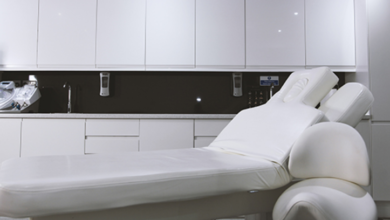4 Best Practices for Inter-Rater Reliability Testing in Healthcare

Sustaining high levels of patient care in the healthcare industry requires accurate and regular evaluations. Healthcare organizations can reduce biases and disparities in evaluations by using best practices in reliability testing, which will ultimately produce more trustworthy and dependable outcomes. By putting these approaches into practice, healthcare settings can increase their overall quality while also increasing the dependability of their assessments.
Clearly Stated Criteria Definition:
Define precise assessment standards to guarantee dependable and consistent evaluations in the healthcare industry. These criteria outline the rules and principles for assessing different healthcare methods. Establishing clear guidelines and standards can help healthcare practitioners better understand what makes up high-quality care. Indicators like patient outcomes, procedure adherence, and communication efficacy are a few examples of criteria. Precise standards offer a structure for raters to adhere to, diminishing vagueness and personal interpretation.
Moreover, offering training materials and examples helps improve comprehension and application of the specified criteria. Healthcare workers can better understand the subtleties of evaluation with the use of interactive exercises, case studies, and visual aids. Consistency and impartiality in assessments are promoted via training sessions centered around the criteria, which guarantee that raters are in agreement. Ultimately, trustworthy inter-rater evaluations in healthcare contexts are predicated on having well-defined criteria.
Instruction and Adjustment:
Appropriate training programs give medical personnel the abilities and information needed to carry out assessments correctly. These workshops promote a common understanding among raters by highlighting the significance of objectivity and consistency in evaluations. Inter-rater reliability is improved when raters align their interpretations of assessment criteria through calibration procedures. By ensuring that all parties apply the criteria consistently, calibration helps to minimize evaluation disparities. Healthcare organizations can improve the quality and consistency of their assessments and, in turn, the reliability of inter-rater evaluations in healthcare settings by placing a strong emphasis on training and calibration.
Furthermore, to pinpoint any areas that require improvement, ongoing monitoring and assessment of the assessment procedure are essential. Frequent feedback loops enable medical professionals to quickly resolve any issues or inconsistencies that surface during the assessment process. Over time, more accurate and consistent assessments will result from this iterative technique, which guarantees that the dependability of inter-rater evaluations is continuously optimized. Furthermore, continuing education programs give medical practitioners a chance to stay current on best practices and innovations in evaluation techniques.
Haphazard Sampling:
Random sampling is essential to guarantee the validity of reliability testing in the healthcare industry. Healthcare practitioners use random sampling techniques to choose instances for assessment without bias or preference. This methodology guarantees that the specimen is indicative of the wider populace or patient cohort, hence augmenting the dependability and applicability of the examination outcomes. By offering an impartial selection process, random sampling lowers the possibility of distorted results, boosting the legitimacy of reliability testing in healthcare settings.
Additionally, random selection encourages impartiality and openness in the evaluation procedure. This eliminates the possibility of cherry-picking certain examples that might not fairly represent the general effectiveness or results of healthcare methods. By adopting random sampling approaches, healthcare companies can properly evaluate the dependability of their procedures and make defensible decisions.
Data Interpretation and Reactions:
A comprehensive data analysis is necessary to derive significant insights from reliability testing in healthcare. Healthcare experts examine the gathered information to find any disparities or inconsistencies between raters. This analysis assists in identifying areas that may require additional training or explanation to increase reliability. Furthermore, raters get useful comments based on reliability test results. Through continual improvement made possible by this feedback loop, healthcare practitioners can identify their areas of strength and progress during the assessment process.
Moreover, improving reliability testing in the healthcare industry requires leveraging feedback to improve training courses and evaluation standards. By iteratively improving their evaluation systems, healthcare organizations can gain valuable insights from data analysis and feedback. In the end, this iterative process produces assessments that are more accurate and trustworthy by promoting a culture of ongoing learning and improvement among medical practitioners.
Conclusion:
Well-defined assessment criteria provide a strong basis for evaluations, and thorough training and calibration sessions guarantee that all medical professionals understand and implement the criteria consistently. Techniques for strategic random sampling aid in removing bias and improving test result dependability. Furthermore, thorough data analysis combined with helpful criticism allows the assessment process to be continuously improved.
Also Read: A Fusion of Health, Tradition, and Flavor




